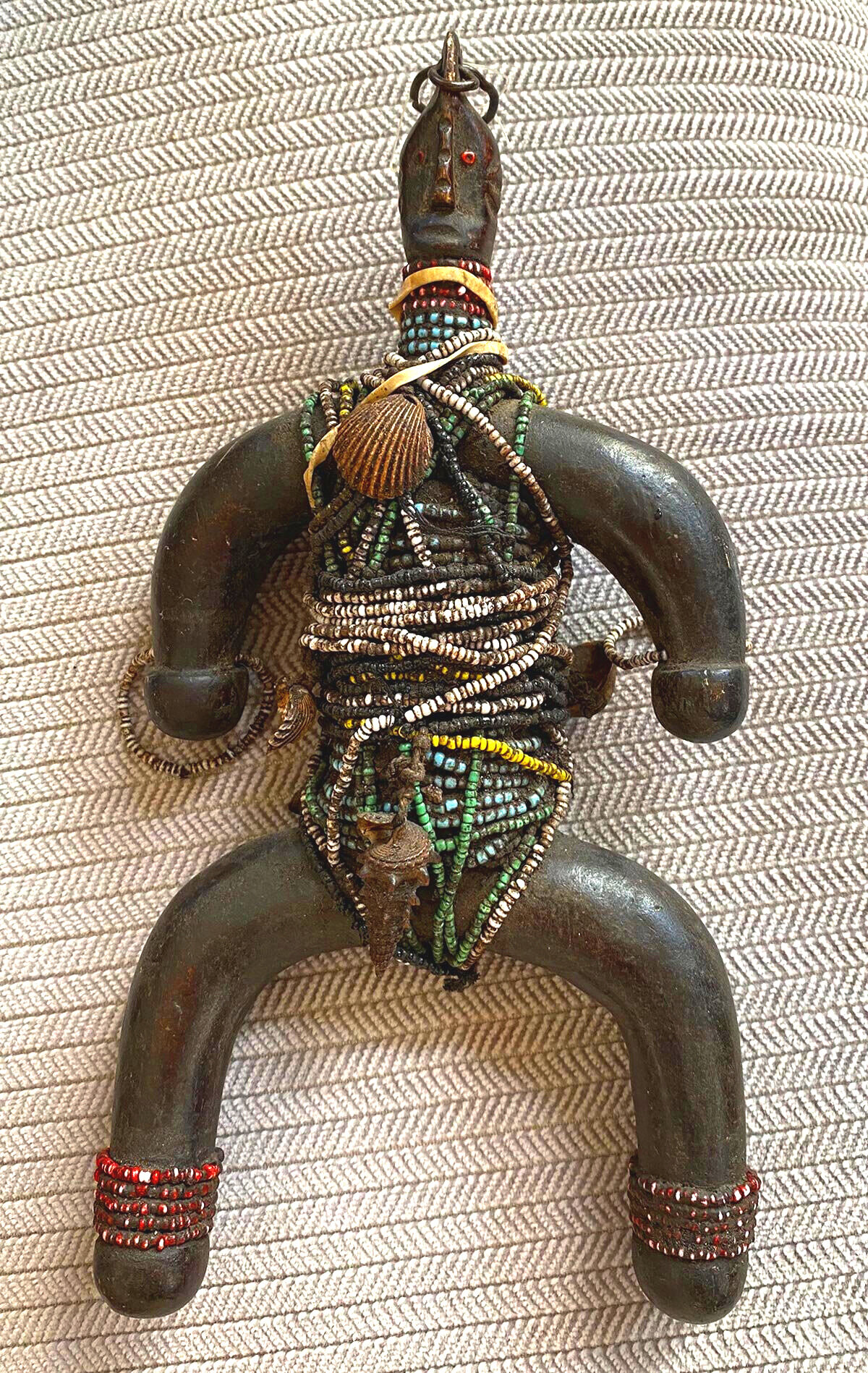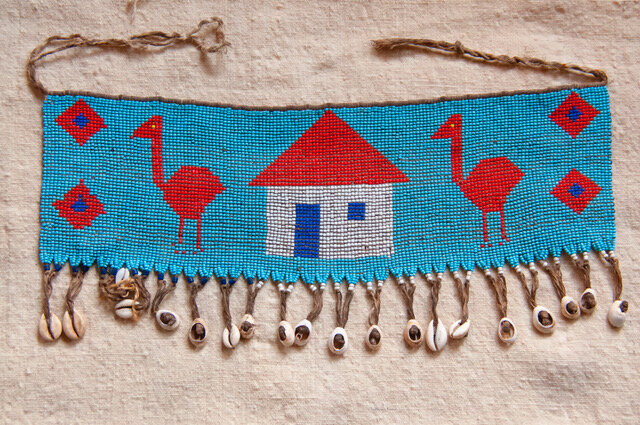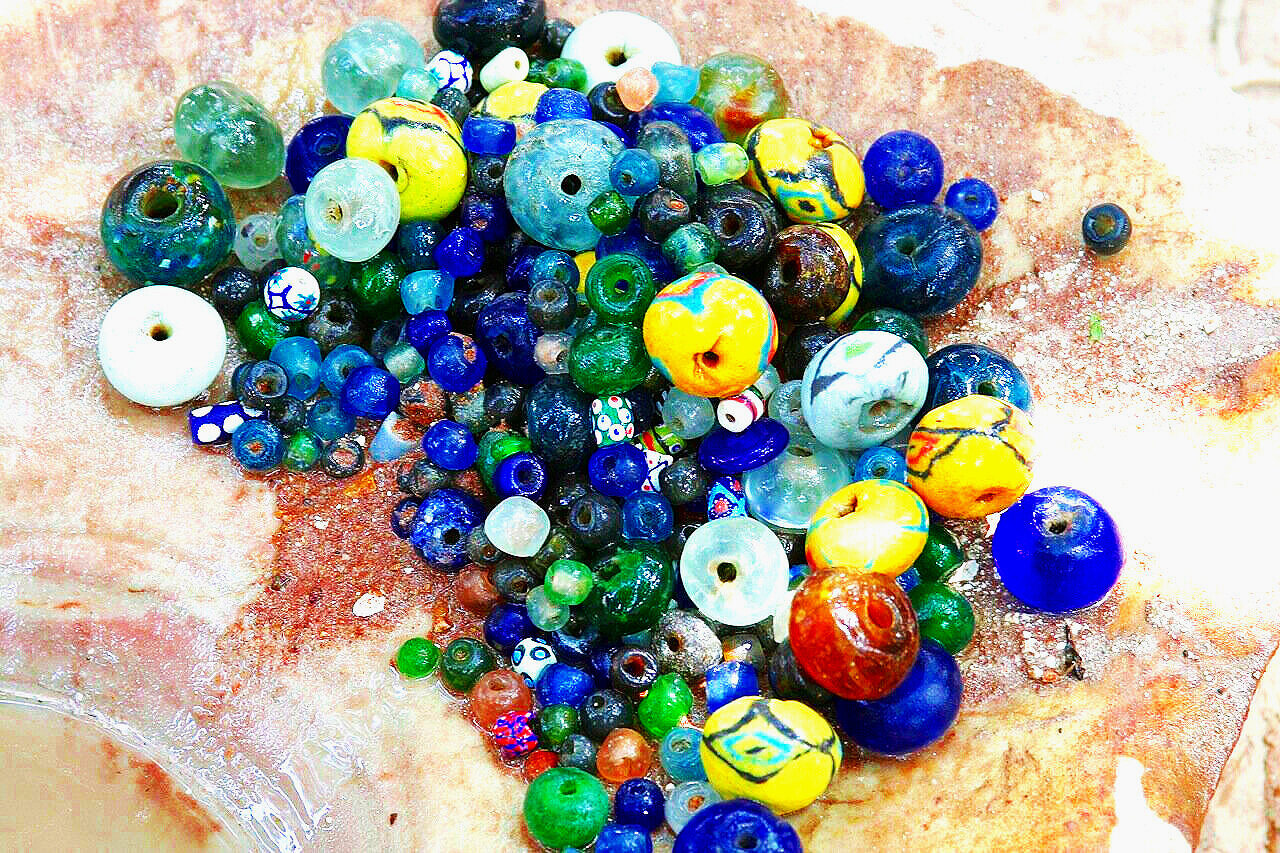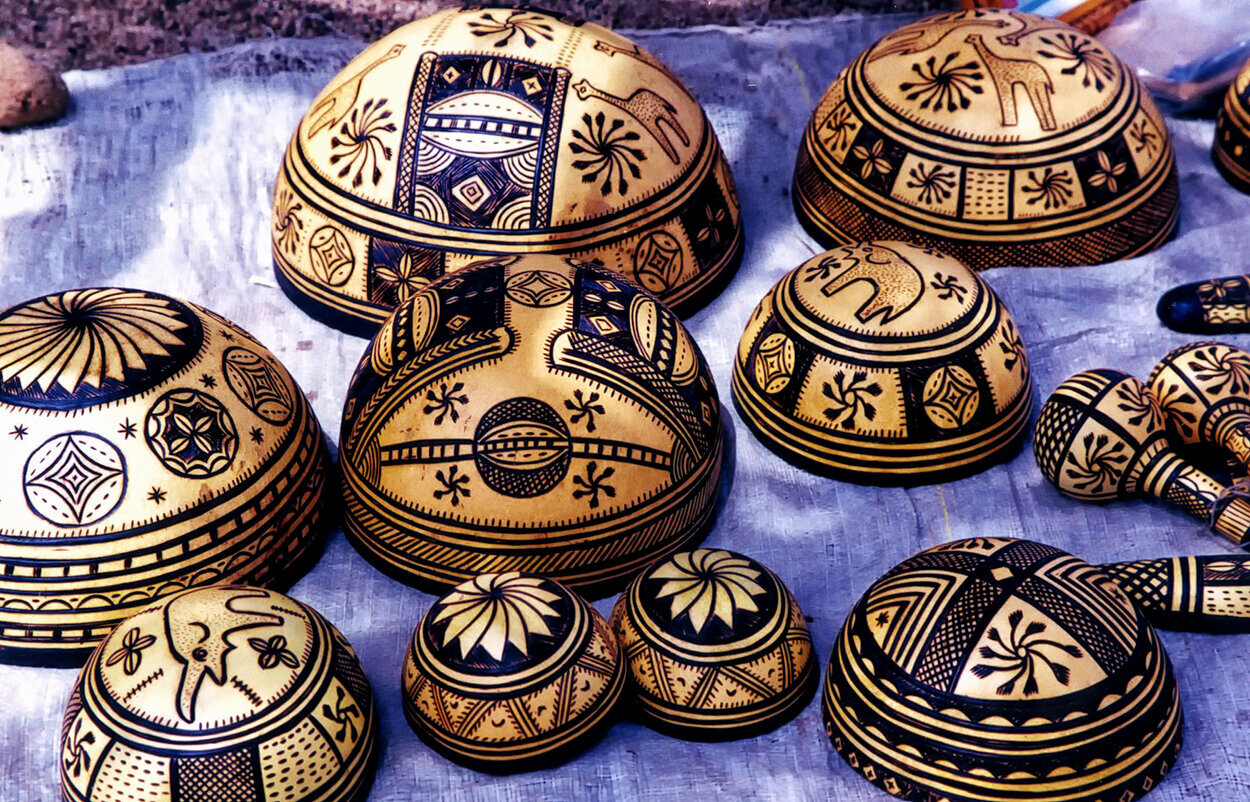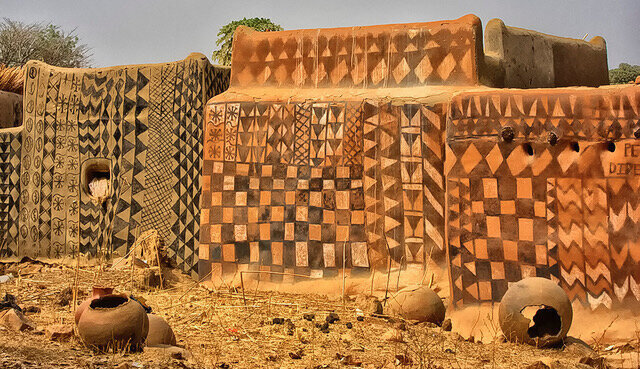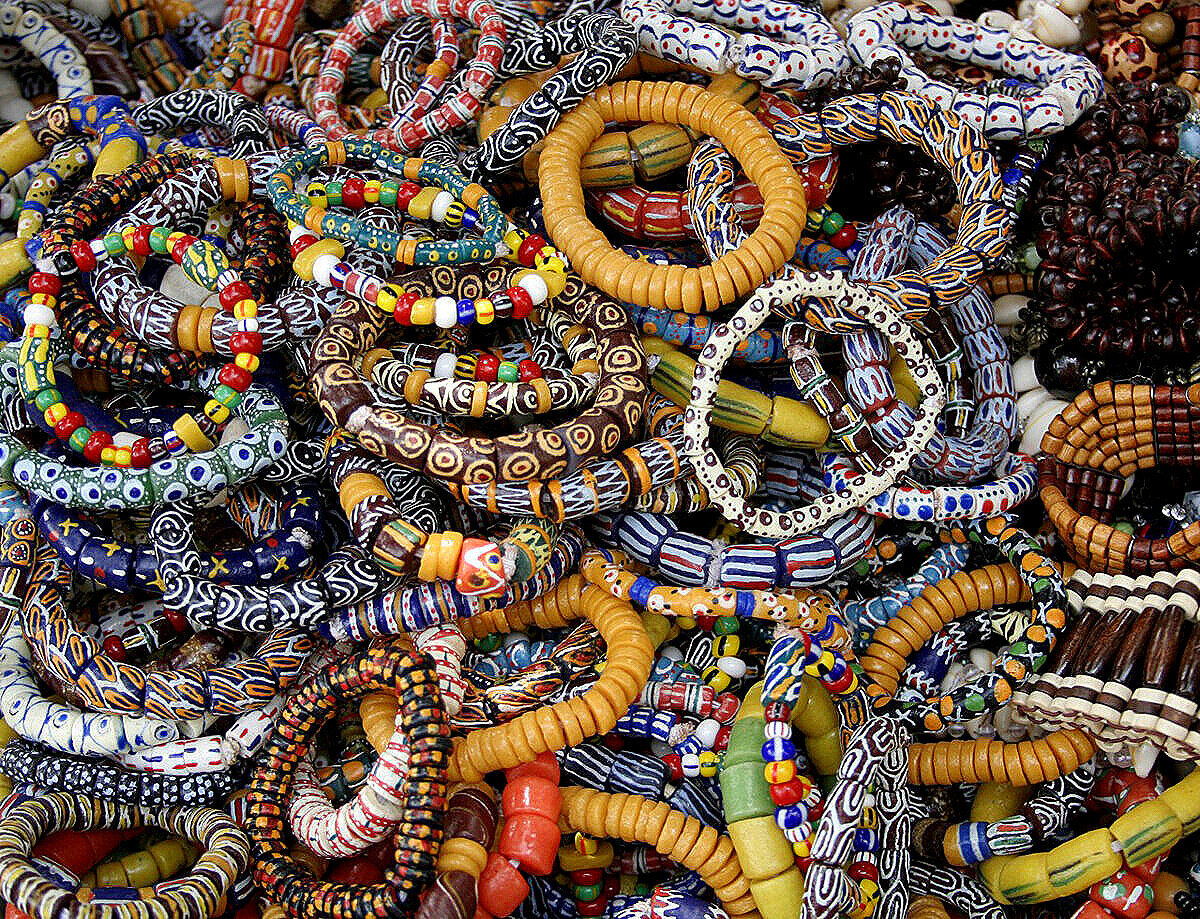
West African Beads
Beads Talk
Beads are as essential to life in Africa as water, food, and air. Their diverse colors, the sounds they make, the movement of these orbs around the neck, waist, wrist, or ankle all say “look at me.” Whether they are glass, clay, metal, wood, stone, shell, seeds, resin, paper, or plastic, beads are worn from birth to death, by men and women. Beads tell us who they are, where they come from, and how special they are.
My friend and Ghana bead mentor Kati Torda Dagadu taught me so much about West African beads, and I’m pleased to share what I’ve learned.
Young girl celebrating initiation in Ghana (Dipo) with multiple strands of yellow glass beads of prestige
History and social function of beads
The history of beads and their function scatter in all directions. Economically, they were used as barter, traded as currency, collected for wealth, loaned out for cultural or family occasions, or used as dowry gifts. Although the Yoruba made beads starting in the 11th century, glassmaking was not common in West Africa. European traders exchanged glass beads for gold, salt, and tragically for slaves as early as the late 15th century, but it wasn’t until the Italians revived the ancient techniques for making glass beads that the stunning Italian millefiori (thousand flowers) became the most sought-after trade bead, especially by Ghanaian nobility, in West Africa in the 19th century.
Culturally, beads are used for rites of passage, such as marking a birth or a person’s transition from one stage of life to another, as in the Dipo puberty ceremony when girls are initiated into womanhood in Krobo, Ghana.
Waist beads, photo provided by Kati Torda Dagadu
Beads worn around the waist
At birth, a baby is given beads to be tied around the waist for a practical purpose. The mother can tell if a baby is gaining or losing weight depending on whether the beads are tight or loose. The beads also hold the cloth napkins or diapers in place.
Even today in contemporary society, young Ghanian women still wear waist beads, which have an intoxicating effect on the opposite sex! However, tradition forbids a woman from showing her waist beads to a man outside marriage.
Beads unite family and community
Beads create a sense of belonging in a family, tribe, or village. A string of beads given to a bride by the groom’s family can convey a sense of connectedness. Kati Torda, who co-authored “Ghana: Where the Bead Speaks”, recalls on her first visit to the family, each family member dropped a beautiful bead into a bowl; later these were collected and strung into a ‘bridge’ bracelet, connecting her to her new family in Ghana.
Chevron beads on Cedi Djaba, master glass bead maker from Krobo, Ghana
Beads as symbols
Beads can be symbols of power and status. If you are a powerful chief in Ghana, you wear rare and expensive beads of power like bodom or chevron beads. In fact, the bodom beads are said to be found “where the rainbow meets the earth.”
Beads are worn by the common person as well. No matter how powerful you are, Ghanaians believe that you are born into this world to work. Many wear the cocoa seed pod, as it is the sign of the working person.
Namchi fertility doll, northern Cameroon
Beads link to the spirit world
Beads are used in traditional magic such as gris-gris to protect the wearer from evil spirits and bring good luck, fertility, and fortune or cure sickness. Diviners often throw beads in different directions in search of answers, sometimes good and sometimes not. I’ve known collectors who have waited for many years for a certain powerful bead to come to market, but that happens only when its original owner decides it can be sold.
I am drawn to traditional beads, but I can’t resist the new dazzling shapes, colors, stand-out designs, and innovative production techniques of contemporary beads. Whatever your fancy, you'll find them all in West Africa!
Ghana Dipo ceremony when a girl becomes a woman
Glass beads, Krobo, Ghana
Ghana glass bead bracelets
Girls cache-sexe worn by young girls as a modesty apron in Cameroon



